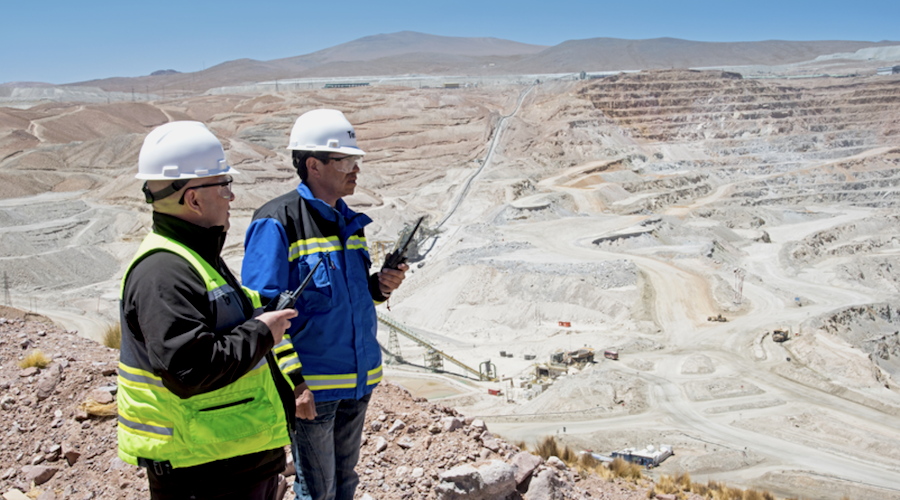Mexico’s new (old) political realities
Investors are wringing their hands these days over growing political risk in Latin America. But is it really any greater than it was a few short years ago? Certainly the rhetoric has grown more shrill, commensurately with higher gold prices (Isn’t it ever thus?), but the political underpinnings of the age-old mining versus communities debate have not changed.
The recent on-again, off again closures of New Gold’s Cerro de San Pedro gold-silver mine in San Luis de Potosi make an excellent case study. The project is wholly-owned by New Gold Inc. (NGD.TSX,AMEX,NYSE) and accounts for about a third of its annual production, with proven reserves of 1.4 million ounces gold and 52 million ounces of silver.
There are a couple of things about that case which kind of stand out …
One is the people who comprise the anti mine lobby, the so-called Pro San Luis Ecologico.They’re an NGO that was formed in 1993 after an environmental conference hosted by the Partido de la Revolucion Democratica, or PRD, ostensibly to select a party candidate to run for governor of the state. One of the resolutions to come out of the conference was the creation of an environmental lobby. It was the Pro San Luis Ecologico that filed suit alleging that New Gold’s operations at Cerro de San Pedro were illegal.
The group picked up a bit of momentum when it became allied with local unions and the Frente Amplio Opositor (broad opposition front), or FAO, which originated as an anti Somoza coalition in Nicaragua in the 1970s. I’m not an expert on this, but I believe the FAO is an umbrella group pushing some kind of dyed-in-the-wool Marxist ideology in Latin America. Anyway, I think it’s safe to say it’s not just about the mine anymore (if it ever was!), but the broader politics in the region.
In 2009, coincidentally the same year that the PRD lost the state governorship of Potosi to a political rival, a circuit court nullified New Gold’s environmental impact permit, so I have to assume the group had some sympathizers among the judiciary.
The permit was subsequently withdrawn by the environment ministry, but New Gold won a temporary reprieve that allowed them to keep mining until their appeal could be heard.
This is interesting: Cancel the permit, then issue a temporary injunction granting the company the right to continue mining. That’s very TLA – ‘this is Latin America’.
To really get all this, you have to understand something about politics in Mexico. Nobody is really interested in closing mines, nor building consensus. Politics are confrontational – throwing yourself in the path of bulldozers, getting clubbed by police, going to jail. What the political opposition really wants to do is punish their enemies, and I suppose that stems from the collective memory of the colonization of Mexico by the Spaniards centuries ago. People outside Mexico City and the distrito federal, or D.F., are very anti federal government. They call them the Spaniards, or chilangos (locusts).
That kind of sentiment is great fuel for political parties such as the PRD, a left of center splinter group that quit Mexico’s ruling PRI in the 1980s and became its harshest critic. It’s hard to tell how left wing the PRD really is because they skirt the political boundaries very expertly. I suspect they use the FAO occasionally as pawns, in much the same way they used the Zapatistas in Chiapas.
After the mine’s brief closure in November of 2009, the FAO launched what it called a “mega-remediation project” to restore ‘this zone of unique environmental and historical importance for Mexicans’. Hmmm… well that sounds a lot more like Nicaragua to me than Mexico. And I don’t see how it will help the PRD get their choice of governor elected next time around.
In fact, I’m not sure the political will to close the mine really exists at all. How many votes do you get by throwing people out of work? The annual payroll and benefits at Cerro de San Pedro totals US$6.5 million. That’s a lot of money for a small community.
So the question I have now is twofold: Does New Gold have what it takes to go the distance on this? Let’s face it, they’re not community relations experts with deep pockets and unlimited patience (and lawyers!) like Barrick or Newmont. Also, how much will a ‘solution’ to their woes at Cerro de San Pedro ultimately cost them?
More on that in a future edition.
Kb
{{ commodity.name }}
{{ post.title }}
{{ post.date }}

Comments